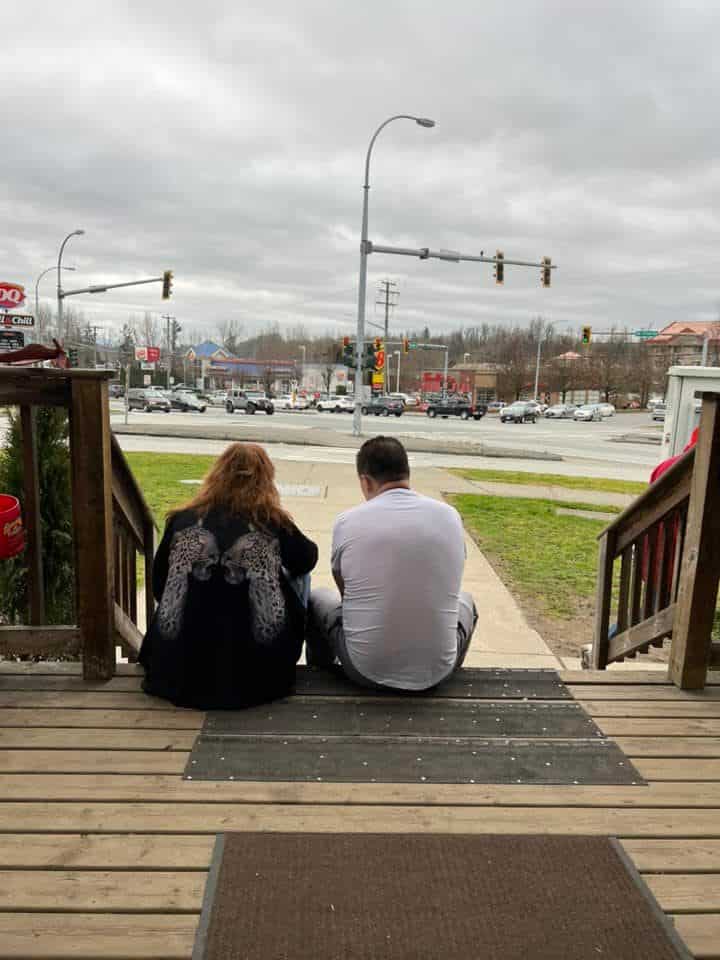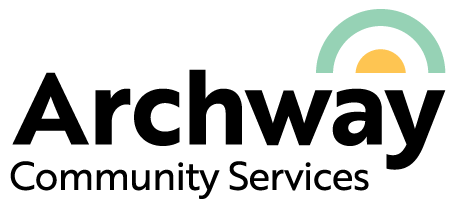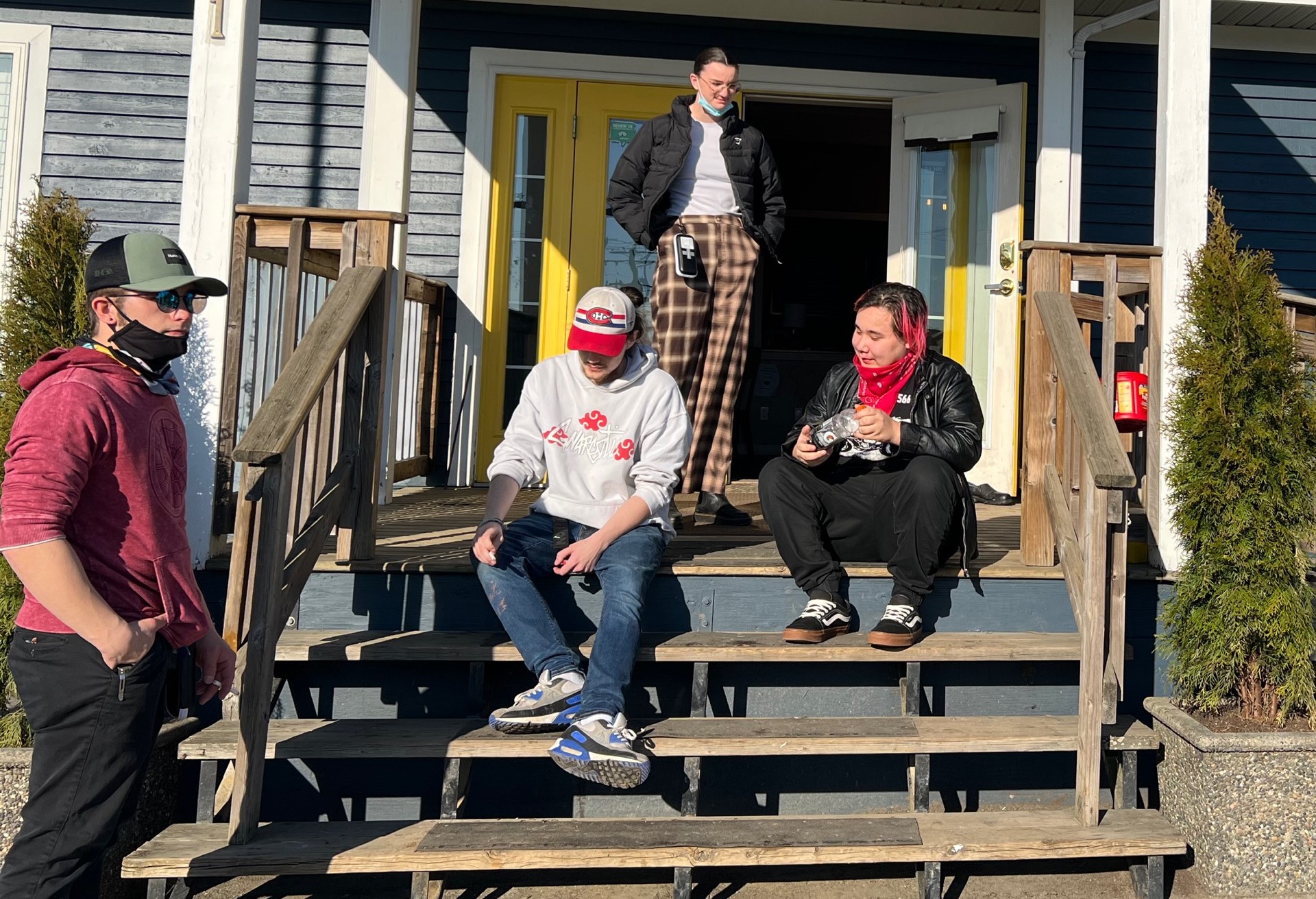
Homelessness is a complex topic that can be linked to addiction, mental health, trauma, high housing costs and more. While there are no easy solutions, Archway is working on proactive solutions both on an individual and systemic level.
To help address the issue of homelessness, staff successfully applied for a Strengthening Communities Services Grant from the Union of BC Municipalities with the support of the City of Abbotsford.
The grant is funding a drop-in shelter, The Cabin and an overnight shelter, The Lodge on a one-year pilot basis. The Cabin opened on November 16th, 2021 on Delair Road and The Lodge opened on January 31st, 2022 on Montvue road in downtown Abbotsford.
Partners include 5 and 2 Ministries, Impact, Drug Wars Survivors, Cedar Outreach and the Abbotsford Restorative Justice and Advocacy Association. The team works closely with the Abbotsford Police Department Street Outreach and Response Team (SORT) as well as the Assertive Community Team (ACT). Both SORT and ACT help advocate for those experiencing severe mental health issues.
“This project represents an exciting level of cross-organizational collaboration which has long been needed in our community,” said Megan Capp, the Manager of Social Justice, Seniors and Housing at Archway.
Ward Draper, the founder and Executive Director of The 5 and 2 Ministries echoed the sentiment, “this phenomenal partnership is bringing new hope and renewed optimism to our friends living outside and the partner agencies. In these challenging and difficult times, we are finding a way by working together to bring the empathy and compassion necessary to effect real and lasting change.”
“This collaboration of diverse individuals and partners who each bring unique gifts and insights are able to face the needs of real humans with real struggles with real solutions. Every participant of this collaboration is standing shoulder to shoulder to bring healing to our friends who might need support. Together we will rise.”
“This project represents an exciting level of cross-organizational collaboration which has long been needed in our community.”
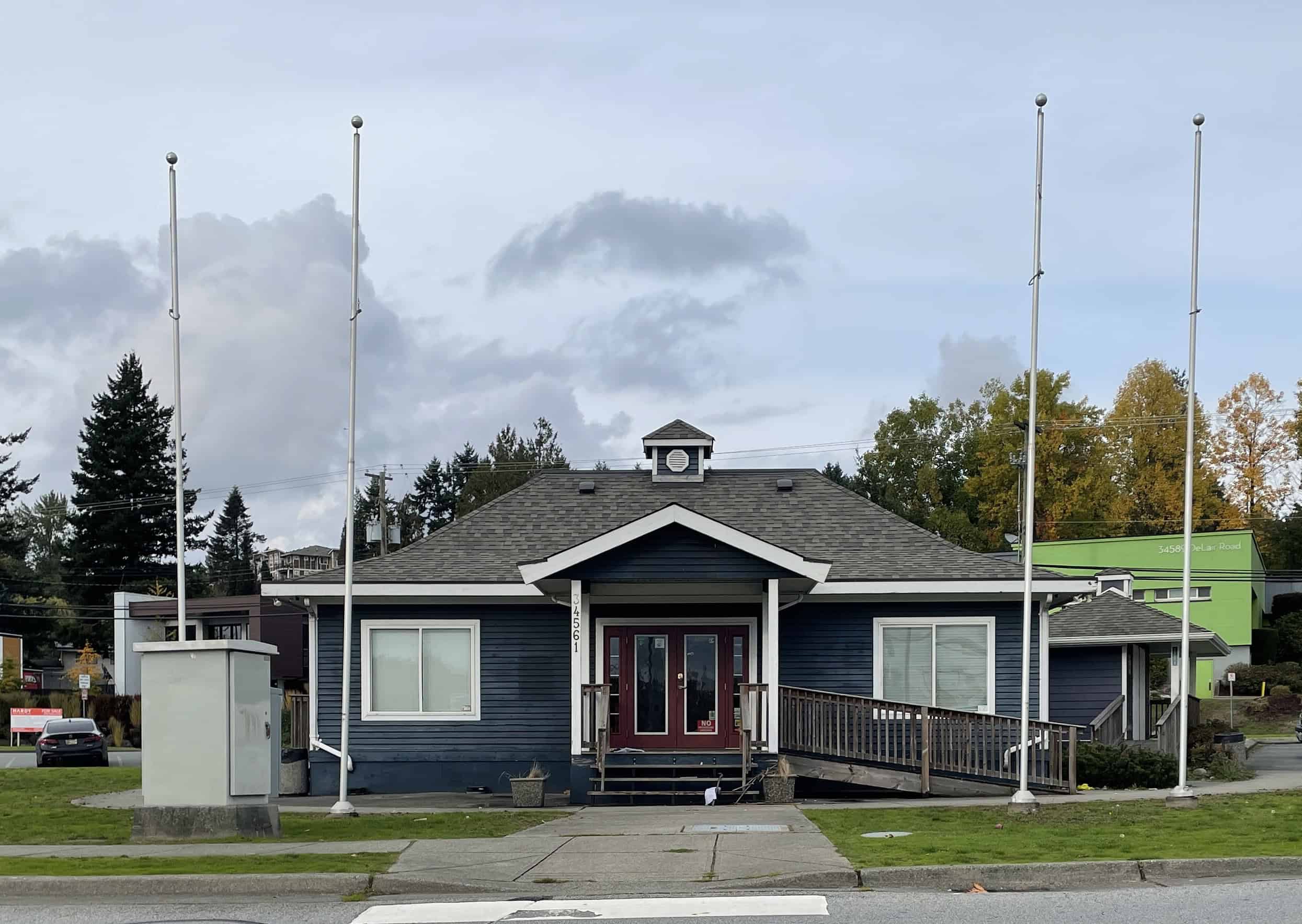
The Cabin is located on Delair Road in the former Abbotsford Tourism building.
Abbotsford’s Living Room
The Lodge, like many other shelters, closes each morning leaving individuals without a place to be during the day.
The Cabin is open from 8am to 8pm which gives such individuals a safe refuge to rest, get medical aid and free food (much of it supplied by the Archway Food Bank and the Salvation Army outreach team).
The Cabin also provides public washrooms which are regularly checked and cleaned. Twice a week, Refresh Ministries brings their mobile shower unit to the site.
There is a community forming as individuals become more comfortable using The Cabin. Individuals may chat, watch movies, play live music, eat together, charge their devices and find support.
“We want to be known as ‘Abbotsford’s Living Room’ where people are welcome to warm up, grab a cup of coffee, and feel safe enough to relax and be themselves,” said Natalia, one of the project co-leads.
Stan* is in his early 60s and has been living on and off the streets for over a decade. He visits The Cabin for the food and a place to stay in the afternoon. Before The Cabin was opened, he’d walk around Abbotsford or stop by a coffee shop if he had the funds.
Stan says that while he “lives below the poverty line he tries to live along the border of civility.” This can be challenging as he points out that “homelessness is one of the last bastions of prejudice left.”
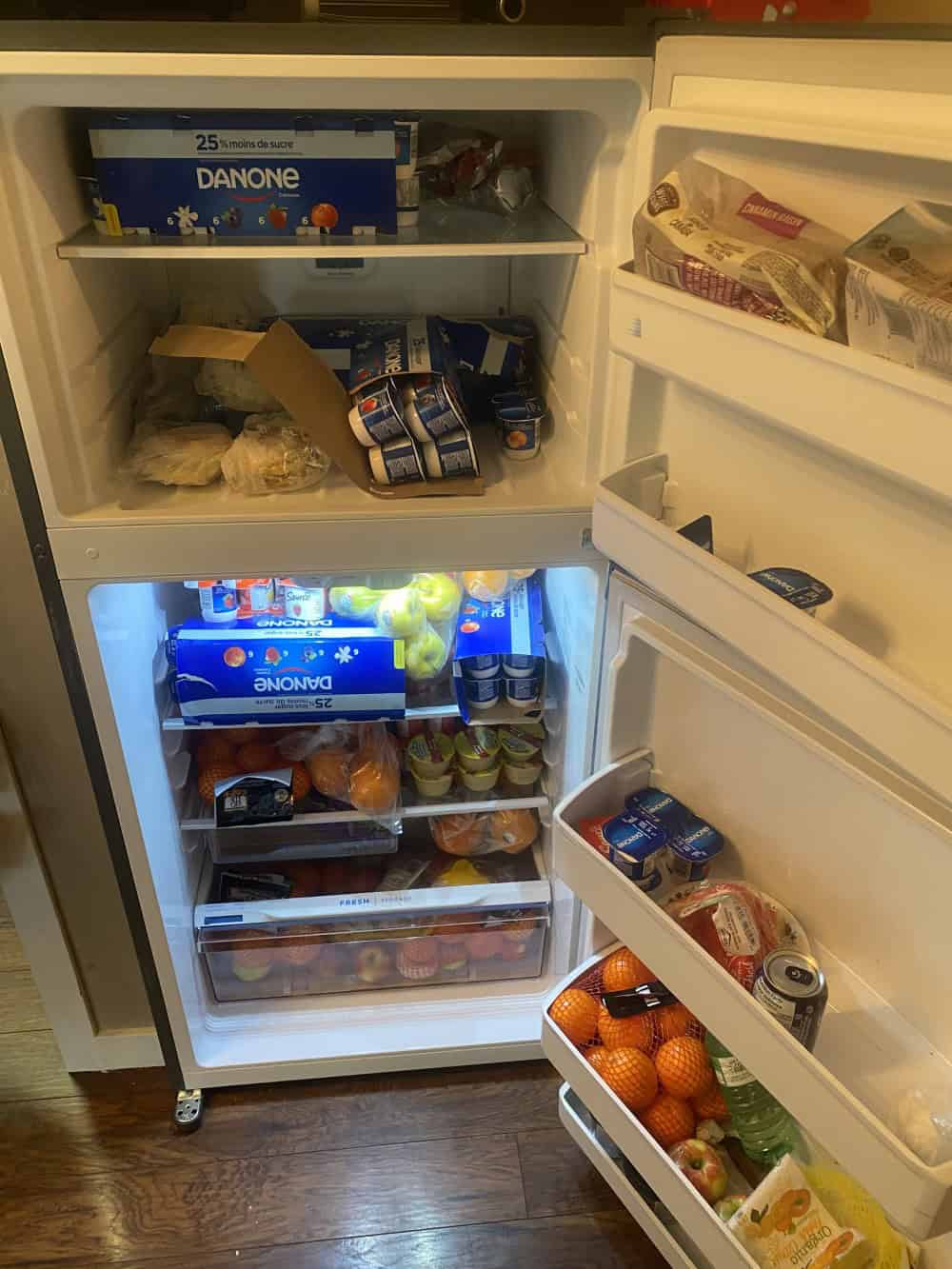
Free food is available thanks to donations from the Salvation Army & the Archway Food Bank
New Approach with Daytime Shelter
By meeting people’s basic needs, staff are able to build relationships which make individuals much more receptive to offers of referral to substance use counselling, mental health services as well as long-term housing.
Since opening staff have been able to help several individuals start working towards finding long-term housing. The first step to getting on a housing list is through a Vulnerability Assessment Tool (VAT) screening. Once a VAT is completed, the individual will be evaluated by a collaborative team of service providers who will bring their name forward when there is an available bed. One of the relationships built through The Cabin has already led to housing, with a peer recently moving into Hearthstone Place.
“We tell people ‘if and when you’re ready, we’re here to help,’” said Shawna, a practicum student at The Cabin.
Staff have also supported individuals in obtaining ID and getting connected with health services.
Cass, a peer worker, helped an individual make an appointment for his COVID vaccine so he could visit a loved one at the hospital.
“He didn’t have a personal health number so he didn’t think he could get his vaccine. With a few phone calls we were able to get him an appointment the next day,” said Cass.
Another young man came to The Cabin as he realized he was wandering the streets experiencing significant mental health challenges and was ready to ask for help. The staff were able to call an ambulance and get him the medical help that he needed.
“It’s through the trust that forms over time that allows folks to ask for support.” says Natalia.
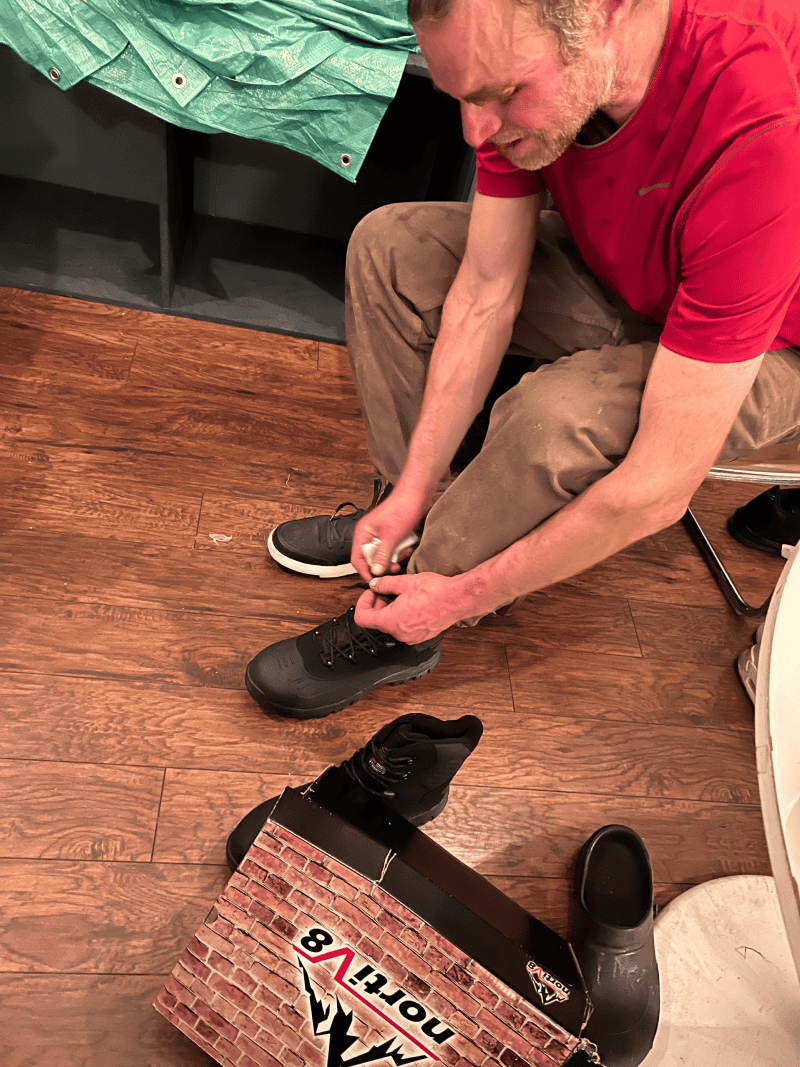
Staff helped one individual find shoes on a Facebook donation page and hand out donations of warm gear.
Employing Peers to Bridge the Gap
The Cabin is also an employment program, giving unsheltered individuals, or those with the lived experience of being unsheltered, an opportunity to work in and around the space. The Drug Wars Survivors organization interviews and hires the peers.
“As we have always said, who knows what’s needed at services better than those who use them?” said Marcella, one of the project co-leads.
Peers act as consultants who help inform best practices, provide context and understanding to issues and are often the first to respond to situations.
They are also employed as peer support workers, maintenance and cleaning staff. This not only empowers them, but also encourages them to take ownership over the space.
The partners work to nourish existing talents and give increasing levels of responsibility.
“We are learning to trust and enhance each other’s skills as people who come from drastically different styles of survival,” said Marcella.
This unique approach of employing peers helps ensure that The Cabin meets the needs of individuals and connects them to others with similar lived experiences.
“Having peers really bridges the gap,” shares Josh, one of the peer support workers. “The street community doesn’t easily trust people who may have university degrees but not the life experience.”
Josh previously worked at an overdose prevention site after another organization noticed his “knowledge and big heart.” Eventually he became more involved and helped write grants and present at a conference.
Josh shares that the employment, even a few hours a week, gives people a sense of value which they lose when they are unemployed. He shares the story of another man, who with a few hours a week of employment, and a newfound sense of belonging and purpose was able to reduce his use of meth. Earlene, another peer support worker, also says that the employment makes her use substance less often as she feels like she is giving back.
“We’re all pack animals at heart and want connection,” said Josh. “The first time people come in here, they think it’s freaking amazing and can feel safe without being judged.”
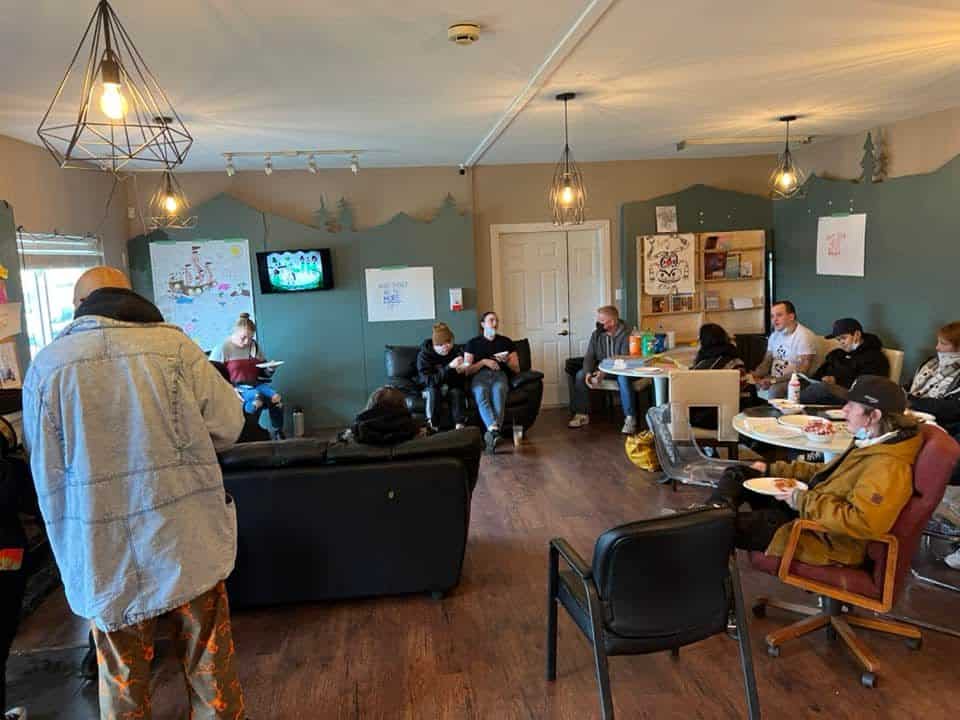
Inside The Cabin
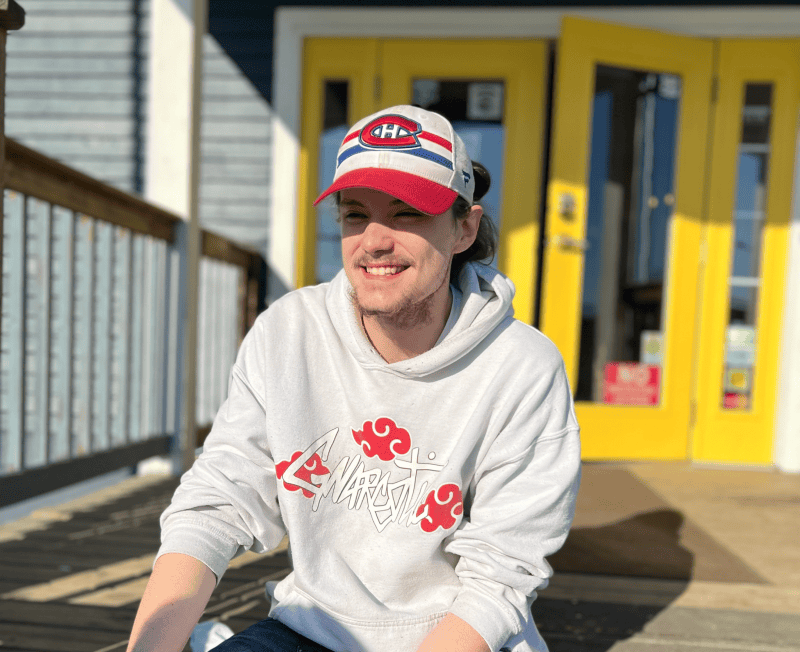
Peer Worker Josh on The Cabin’s porch
Good Neighbours Agreement
Archway is committed to protecting the rights and dignity of the unsheltered while also working with neighbours to ensure public safety.
Individuals who use the space agree to a set of rules. Those who aren’t respecting the space or that of our neighbours can be banned. Staff use de-escalation tactics and try their best to find solutions where everyone stays safe.
The Cabin opened ahead of schedule to meet the immediate needs during the extreme weather crisis in November when the flooding and heavy rain evacuated many individuals from their camps.
Staff are now in regular contact with neighbouring businesses and have offered to assist businesses with any guests not respecting their space. Staff regularly walk a wide perimeter around The Cabin to remove garbage and bring individuals to the centre.
Security has been added at night when the centre is closed. When the centre closes for the day, individuals are offered transportation to shelters like The Lodge through the Archway Community Van.
“I can’t thank everyone enough for the quick and thorough response to some of the challenges that were experienced in the beginning at The Cabin,” said Ross Siemens, Abbotsford City Councilor and co-chair of the Community Advisory Board, which creates a community plan on homelessness.
Siemens is also the owner of Hub Motor Services in downtown Abbotsford. “My business is in the same neighborhood where The Lodge is located and I can honestly say that there have been absolutely no issues.”
“I appreciate Archway’s service and willingness to assist in meeting some extremely challenging issues in our community.”
The Abbotsford Restorative Justice and Advocacy Association (ARJAA) were built into the project during its conception. They act as neutral convenors to work to resolve any issues or disputes. The first meeting was in January and included representatives from the City of Abbotsford, the Abbotsford Police Department, Archway, neighbouring businesses and area residents. Together the participants are working to identify potential solutions and understand everyone’s role in working together.
“Connecting with, and providing support for, individuals experiencing homelessness is of paramount importance to the Abbotsford Police Department,” said Sergeant Kevin Murray.
“The Cabin is an important spoke in the wheel of support for many of most vulnerable citizens. The impressive inter-agency collaboration that exists at the Cabin helps provide a high level of care to those in need with the added aim of reducing conflict with surrounding businesses and individuals.”
“I can’t thank everyone enough for the quick and thorough response to some of the challenges that were experienced in the beginning at The Cabin.”
“The Cabin is an important spoke in the wheel of support for many of most vulnerable citizens. The impressive inter-agency collaboration that exists at the Cabin helps provide a high level of care to those in need with the added aim of reducing conflict with surrounding businesses and individuals.”
By the Numbers
The Homeless Count and Survey Report showed that there were 333 individuals experiencing homelessness in Abbotsford in 2020.
Service providers have noticed a huge increase in the people accessing services lately and believe the number of those experiencing homelessness to be double the official count.
At the time of the report in 2020, there were 166 beds available in emergency shelters, transition houses and extreme weather shelters. The Lodge adds 15 extreme weather shelter beds and while there are now more beds than ever, it’s still not enough. Additionally, many beds are designated and zoned only for extreme weather which leaves people without a place to stay for most of the year.
The Cabin is accessed by 15 to 55 people a day depending on the weather and other factors. Individuals stay for a few hours at a time, and some have been coming daily.

One of the Peer Workers at The Cabin
Indigenous Over-Representation among the Street Community
Staff have reported that up to 80% of the individuals accessing the Cabin have an Indigenous background despite only making up approximately 5% of the general Canadian population. The over representation of Indigenous individuals who are experiencing homelessness is also confirmed by the 2020 Homeless Count and Survey Report which found that 34% of the respondents in Abbotsford had Indigenous ancestry. In the first night of The Lodge opening on Jan 31st, eight of the 11 individuals were Indigenous.
Due to complicated family histories, the difficulty of attaining official First Nations status, internalized racism and other factors, some individuals may not have identified as Indigenous during the survey. Whatever the exact percentage, the numbers point to the ongoing effects of colonialism, racism and residential schools.
Tony*, a peer support worker originally from a band in the Prairies, left his home to escape an abusive family. While he couldn’t speak on behalf other Indigenous individuals using the space, he identified the effects of intergenerational trauma on his own life.
“All that trauma that was put on us from the residential schools was passed down to us through the generations, and we’re still dealing with it.”
Tony said that places like The Cabin are important to give a connection to a community for urban Indigenous individuals like himself, who may be living very far away from their bands.
For Indigenous populations, the concept of homelessness is much broader than simply lacking a roof over your head; —it encompasses the alienation inherent in three centuries of being uprooted from their cultures and communities.
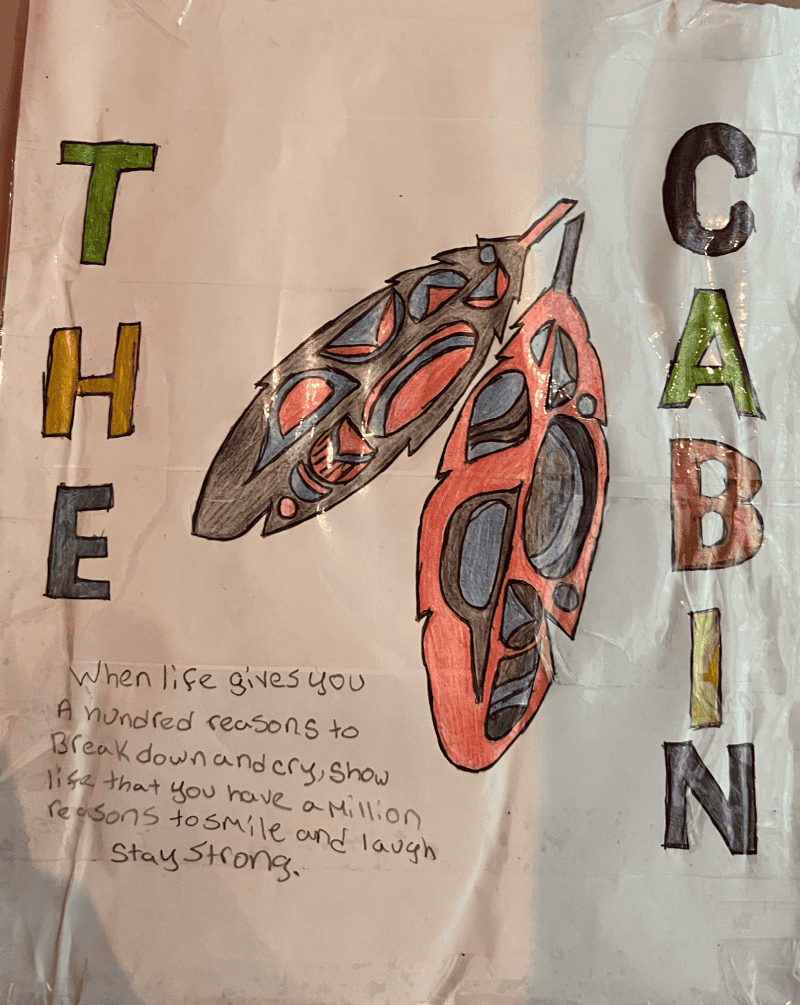
Artwork by one of the individuals who visits the Cabin
“When life gives you a hundred reasons to break down and cry, show life that you have a million reasons to smile and laugh. Stay Strong”
Reasons for Homelessness
Almost half of those in the 2020 Homeless Count live with addiction, a third with mental illness and 13% with an acquired brain injury. Some began using drugs to deal with physical or emotional pain or to self-medicate a mental condition.
The report showed that 32% of the respondents in Abbotsford had been in government care which includes foster care and residential schools.
The ongoing issue of a lack of affordable housing and low vacancy rates in Abbotsford is also a large factor. The chart below from the 2020 Homeless Count shows some of the reasons people have lost housing.
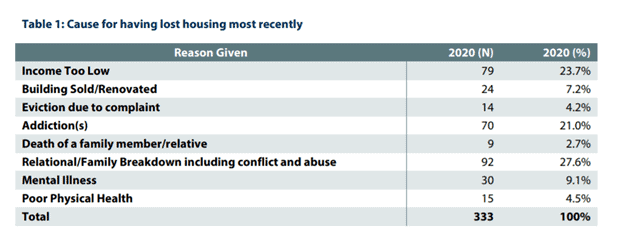
55% of those surveyed point to high rent prices being the main factor to not being able to have a place to live. 22% of respondents receive the Disability Allowance but with only $375 designated for housing, it isn’t enough to find a place in the Lower Mainland.
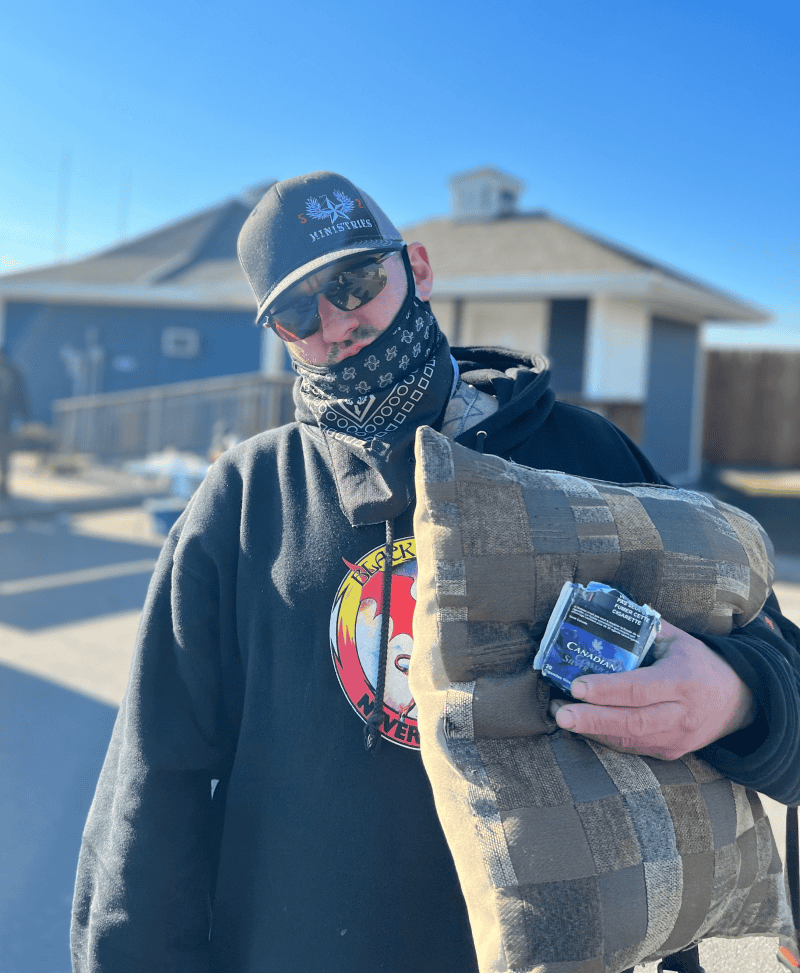
One of the individuals who accesses The Cabin
Beyond the Numbers
While numbers can tell one side of the story, it’s also important to recognize the humans that each statistic represents.
“While people are quick to assign personal blame to those who find themselves homeless, the numbers and our experience show that the picture is more complicated,” said Megan.
“Things like poor health and mental illness can happen to anyone. Many of these individuals don’t have a support system due to being in foster care, intimate partner violence, childhood sexual abuse or abusive parents.”
“Some individuals have been living on the street since they were teenagers,” said Natalia.
Earlene tries to mentor the younger women and sometimes politely suggests things like showers as she says not everyone was taught basic life skills.
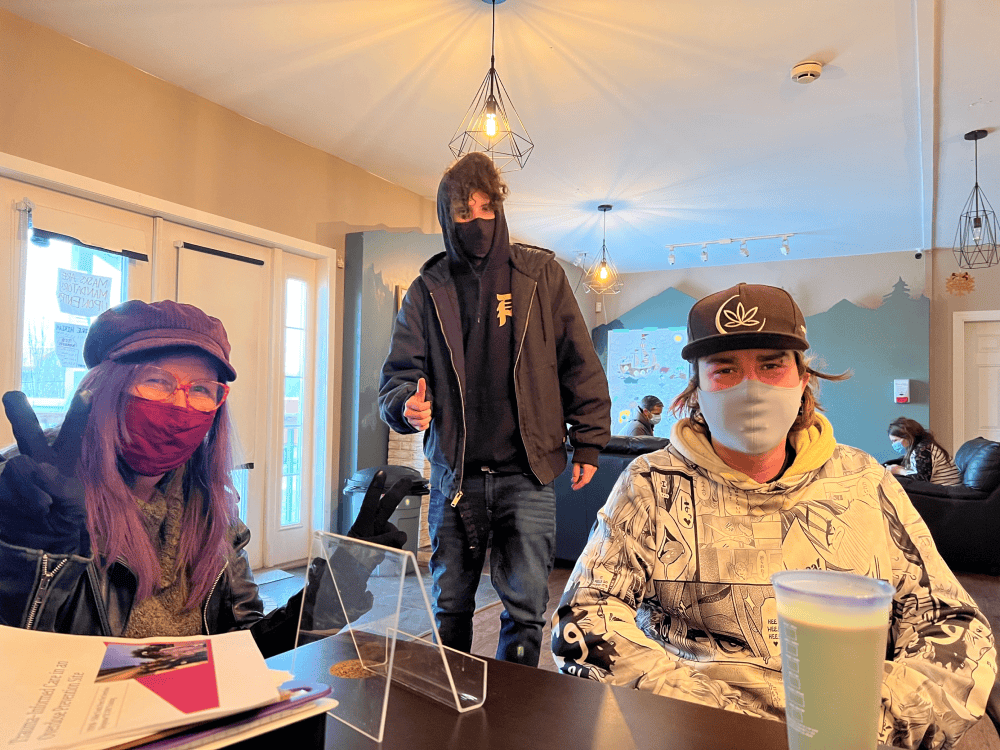
Some of the people who visit The Cabin
Victimization of the Unsheltered
In January, Linda* came across The Cabin while trying to get from a shelter in Hope to her daughter’s place in Vancouver. While hitchhiking, she was assaulted and arrived at the shelter without any remaining funds to make it the rest of the way. As the other individuals at The Cabin heard the story, they began donating a few dollars each and were able to help her get on a bus to Vancouver.
“It’s so inspiring to see the community come together and care for each other,” said Marcella.
Sadly, stories like Linda’s are not uncommon. Statistics Canada reports that of those who had experienced homelessness in the previous five years reported a violent victimization rate of over 30%, nearly five times higher than those who had never experienced homelessness.
Earlene’s journey to being precariously housed came after a car accident which put her in a coma for eight months, the murder of her son, and her teenage daughter becoming trapped in an exploitative relationship. To escape the physical and emotional pain she turned to drugs at age 43. She is currently living in a shelter but hopes to return to her apartment soon after she deals with some landlord issues.
Other individuals have reported being hit by cars while walking but not seeking medical care because of previous negative interactions with medical providers.
“Despite everything they are going through, the resiliency we’re surrounded by every day is inspiring,” said Josh. “It makes me grateful for what I do have.”

Marcella, one of the project co-leads (on the right) with some of the peer workers.
Going Forward
Solving the issue of homelessness will take a combined effort of our community to advocate for affordable housing, increased disability allowances and access to mental health supports and addiction treatment options.
The need for proactive and collaborative services like the Cabin have been highlighted during a difficult year with the flooding, ongoing pandemic and freezing conditions.
“Everyone has the right to life and to have access to food and shelter. We are committed to finding a way to work together to provide justice, opportunities and equitable access for all,” said Megan.
